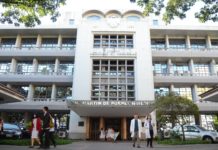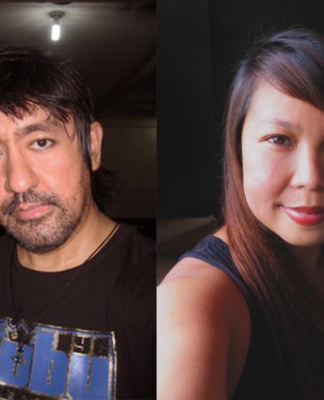FASTER, lighter and significantly cheaper.
And with nanotechnology, new devices could be used to detect infectious diseases and provide early diagnosis, said one researcher from the Universitat Autònoma de Barcelona (UAB) in Spain.
The relatively new technology was the subject of the 3rd Bioanalytical Nanotechnology (BANT) School held at the UST Graduate School last Jan. 29 to Feb. 1.
The workshop featured various theories and methods in the use of nanomaterials for biological and analytical applications.
Analytical science focuses on improving methods of measuring and interpreting natural and man-made substances such as solids, liquids and gases or entities such as cells and complex materials. It uses nanotechnology to develop functional systems or devices at an atomic level, ranging from one to 100 nanometers.
Organized by the Research Center for the Natural and Applied Sciences (RCNAS), in collaboration with the UAB and Catalan Institute of Nanotechnology, the course provided researchers and graduate students a background on bioanalytical nanotechnology to further promote it in the Philippines.
“The participation was from all over the country,” said Fortunato Sevilla III, a resident researcher in RCNAS and co-chairperson of the event. “[Researchers] came from various universities in Luzon, Visayas and Mindanao to study about nanotechnology.”
Nanotechnology utilizes advanced methods to detect chemical substances which may have big implications in human health, environmental quality, food safety and agricultural productivity. It can also be applied to fields of science such as chemistry, biology, physics and engineering.
Salvador Alegret, a researcher from UAB, said nanotechnology could allow scientists to develop accurate and low-cost analytical devices to be produced at a global scale.
These devices include chemical sensors and biosensors which allow careful monitoring of environmental quality, agricultural productivity, food safety and public health.
A significant area in the field of bioanalytical nanotechnology, sensors technology has been recognized as one of the priority fields of development in the Philippine Roadmap for Nanotechnology, a 10-year agenda of the Philippine Council for Advanced Science and Technology Research and Development of the Department of Science and Technology.
The roadmap aims to reinforce research and development of nanotechnology in the country, with its priorities on the fields of agriculture and food, energy, medicine, and the environment.
“[After] we introduced nanomaterials, we introduced biological materials so that we can use these two ideas together to obtain new properties, we call this the convergence of technology based basically on biosystems,” said Alegret, who is also an honorary professor at the College of Science.
Some topics discussed in the four-day course tackled systems that allowed recognition and separation of biological matter and the application of sensors in clinical applications and food safety.
Maria Pividori, another scientist from UAB, discussed the significance of polymerase chain reaction (PCR), a method that produces millions of deoxyribonucleic acid (DNA) copies made from small fragments of the DNA usually applied to medical and forensic science.
She explained that PCR detects the DNA being studied in a sensitive way.
“The sensitivity cannot be performed by other techniques and the way that it is performed is also quite robust,” Pividori said.
She also tackled the use of magnetic beads in biological separations, a technology that can be used to detect any amounts of pesticides, bacteria and viruses in a particular environment.
Reynaldo Bundalian, also from UAB, shared his expertise on the development of electrochemical immunosensors for several infectious diseases which continue to be a global public health concern.
“Basically, it is a new system which would give a diagnosis that a patient is having a disease,” he said. “[These] could help in the surveillance and clinical management of diseases like dengue, tuberculosis and malaria.”
Bundalian said the country was facing problems in the detection of various infectious diseases and early diagnosis could be performed easier with innovative devices based on these nanomaterials.
The first BANT School was held at UST in 2011 as an activity of the academic linkage between the University of Santo Tomas and UAB. Its success paved way to the second BANT School held at the Universidad Autónoma Metropolitana in Mexico City.
















